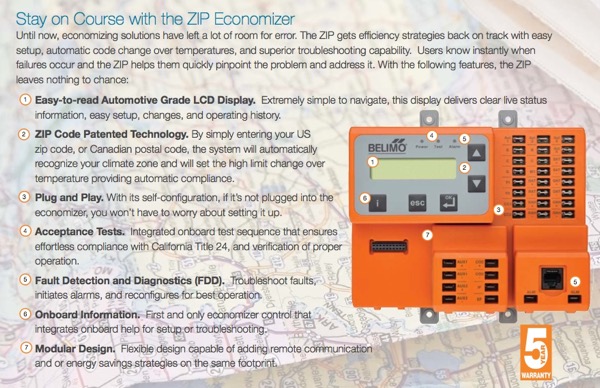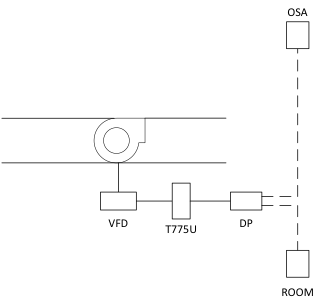For years, Kele has provided dependable, quality 24 VDC power supplies like the DCP-1.5-W, DCPA-1.2, DCP-250, PW2, and the SLS Series. All of these DC power supplies are “linear” power supplies. Another type of DC power supply gaining popularity with building automation and temperature control contractors is called a “switch-mode” power supply (PS6R Series). While both linear and switch-mode power supplies ultimately perform the same task, it is the design technique used to convert AC voltage to DC and the resulting advantages that differentiate the two types.
How they work
To convert AC voltage to 24 VDC, a linear power supply first uses a relatively big, heavy transformer to step down the AC line voltage to a lower voltage around 30 VAC. The transformer also provides electrical isolation by separating the AC line neutral or ground from the power supply’s output. The reduced AC voltage is rectified into a pulsating DC voltage using one (half-wave) or two/four (full-wave) diodes. The pulsating DC voltage is then filtered or smoothed using a large value electrolytic capacitor. Finally, the filtered DC voltage is controlled by a linear regulator to output a constant voltage, even with variations of the input line voltage, the output load, and temperature. The regulator also helps to suppress any output ripple voltage.
Switch-mode power supplies use a different method to convert AC to DC. First, the 60 Hz AC line voltage is rectified and filtered using diodes and capacitors resulting in DC high voltage. Power transistors, typically switching at a preset frequency anywhere from 20 kHz to 500 kHz, convert the high voltage to a higher frequency AC. The high frequency AC is then reduced to a lower voltage using a relatively small, lightweight transformer. Finally, the voltage is converted into the desired DC output voltage by another set of diodes, inductors, and capacitors. Corrections to the output voltage due to load or input changes are achieved by adjusting the pulse width of the high frequency waveform.
Advantages and drawbacks
Size and weight
Linear power supplies operating at 60 Hz require relatively large and heavy transformers. Because switch-mode supplies operate at high frequencies, much smaller transformers are used, making switchers substantially lighter and more compact. For example, a 7.2A output linear supply weighs 14 pounds, mostly due to the large transformer required. However, a 10A output switch-mode supply weighs only 4.4 pounds. The small size and light weight of switch-mode supplies make them well suited for DIN rail mounting in control panels.
Linear supplies that are available with a single voltage input transformer must be ordered for a particular application. Some linears have multi-tap input transformers allowing some application flexibility but they still must be manually tapped for the correct input voltage in the field. Most switch-mode supplies will operate with any voltage from 85 to 264 VAC connected directly to their input, without manual configuration.
Noise
After filtering and regulating, some small amount of undesirable AC voltage will still remain superimposed on the DC output of a power supply. Linear power supplies are quite effective at minimizing noise. A typical specification for noise on the output of a linear power supply is 3 mV peak-to-peak or 0.0125% of a 24 VDC output. Switch-mode power supplies are noisier with a typical maximum specification of 2% of the output voltage or 480 mV on a 24 VDC supply. While some applications like audio equipment or very delicate test equipment may be sensitive to noise on the output of a switch-mode supply, most BAS/HVAC control applications will not be adversely affected.
Efficiency
The efficiency of a power supply is the ratio of its total output power to its total input power. Linear power supplies operate with only 40% to 60% efficiency due to energy lost in the form of heat dissipated through large heat sinks. Switch-mode power supplies are much more efficient, operating around 80% to 90%.
Summary
Linear power supplies have been proven to be reliable but operate somewhat inefficiently. They are relatively noise-free but are generally heavy and bulky because they require large transformers.
In contrast, switch-mode power supplies are small, lightweight, and highly efficient. Although they produce more noise on their output than linear supplies, that is not a factor for most BAS applications.
Whether you need linear or switch-mode, count on Kele to make it easy for you to find the best power supply for your application.


